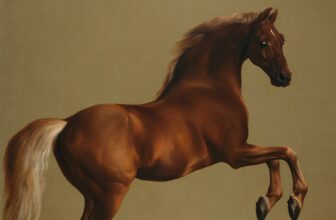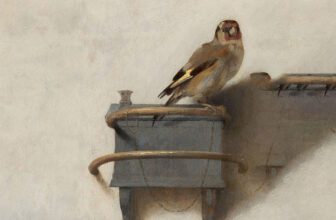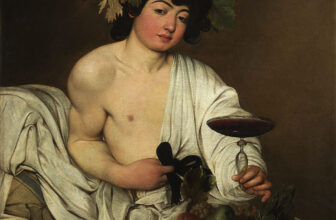
The Progress of Love: The-Meeting , A Journey Through Art, Passion and History
Art has long been humanity’s window into the emotions and stories that define us. Among the countless masterpieces that have transcended time, The Progress of Love: The Meeting holds a unique and tender place. Painted during the shimmering years of the Rococo period, this work embodies the sweetness, delicacy, and secret drama of young love. It is a painting filled with rich details, tender emotions, and a fascinating history that continues to enchant viewers today.
Who Painted The Progress of Love: The Meeting?
The brilliant mind and hand behind The Progress of Love: The Meeting is Jean-Honoré Fragonard, one of the most celebrated painters of 18th-century France. Born in 1732 in Grasse, Fragonard emerged as a prodigious talent under the tutelage of François Boucher, a leading figure of the Rococo style. His work is known for its lightness, grace, and sensual exuberance , hallmarks of Rococo art.
Fragonard was a master of conveying the delicate intricacies of emotion through swirling compositions, playful themes, and an almost musical use of color and form. His paintings often depict lovers engaged in flirtatious games, secret meetings, and moments of tender passion. He painted The Progress of Love series , of which The Meeting is a part , around 1771-1773, during the height of his career.
The series was commissioned by one of the most fascinating and powerful women of the era: Madame du Barry, the last maîtresse-en-titre (official chief mistress) of King Louis XV. Madame du Barry wanted to decorate her newly constructed pleasure pavilion at the Château de Louveciennes with a sequence of paintings capturing the stages of romantic love. For this ambitious and highly personal project, she turned to Fragonard.
What is Depicted in The Progress of Love: The Meeting?
At first glance, The Meeting is a rapturous portrayal of two lovers engaged in a passionate, almost theatrical moment. The scene unfolds in a lush, dreamlike garden bathed in soft, golden light. Flowers, verdant foliage, and classical architecture frame the young couple, immersing them in an idyllic, secluded paradise , a perfect setting for their secret encounter.
The composition focuses on the male figure, who appears to be rushing up a series of marble steps toward his beloved. His arm is outstretched, his body leaning forward in eager anticipation, while his face is lit with excitement and yearning. The female figure, clad in an ethereal, flowing gown, leans back slightly with a mixture of surprise and joy. Her outstretched arm suggests a mixture of invitation and hesitation, embodying the delicate dance of romantic pursuit.
Surrounding the couple are symbolic elements that add layers of meaning: doves (symbols of love and fidelity), statues representing classical deities of love, and cascading roses, all of which create an atmosphere that is at once intimate and grand, tender and exuberant.
This depiction is not simply about a meeting; it is about the very essence of youthful love , impulsive, joyful, and tinged with the thrilling danger of secrecy.
What is The Progress of Love: The Meeting All About?
To understand The Meeting, one must appreciate it within the context of the entire Progress of Love series. The four main paintings Fragonard created for Madame du Barry were:
The Pursuit
The Meeting
The Lover Crowned
Love Letters
Together, they narrate a charming, romanticized journey of a courtship , from initial pursuit to ultimate union.
The Meeting captures the climactic moment where desire and daring are fully unleashed. It is a scene brimming with urgency and passion, suggesting that love, once kindled, cannot be contained by decorum or delay.
Yet, behind the sweet veneer lies an acknowledgment of love’s precariousness. The lovers must steal their moments amid hidden gardens and private alcoves, hinting at the societal constraints and whispered scandals that often surrounded such affairs in aristocratic circles.
There is also a theatricality to the painting that mirrors the Rococo era’s fascination with masquerades, games, and role-playing. Love is portrayed not just as a natural emotion but also as a carefully orchestrated dance, with each movement carrying risks and rewards.
Madame du Barry’s choice of theme was significant. As a woman whose own love story with Louis XV was both celebrated and scandalized, her commission of these paintings reflected both a personal longing for romance’s idealized beauty and an astute understanding of love’s political and social complexities.
The Story Behind the Commission: Victory and Rejection
Interestingly, despite the brilliance of Fragonard’s work, Madame du Barry ultimately rejected the paintings.
Upon seeing the completed series, she found them too emotionally expressive, too wildly romantic for her taste , and perhaps too revealing. She was seeking a cooler, more restrained neoclassical style that was becoming fashionable. She ended up replacing Fragonard’s works with paintings by Joseph-Marie Vien and later Jean-Baptiste-Marie Pierre, artists whose cooler aesthetic better matched the evolving tastes of the late 18th century.
This rejection was a major blow to Fragonard. However, unwilling to discard his labor of love, he took the paintings back and reinstalled them at his cousin’s villa in Grasse. There, they remained, lovingly cared for but largely forgotten by the broader art world for many years.
Where is The Progress of Love: The Meeting Today?
Today, The Meeting , along with the other paintings in the original Progress of Love cycle , has found a much more illustrious home: the Frick Collection in New York City.
The Frick Collection, housed in the opulent former mansion of industrialist Henry Clay Frick, is renowned for its intimate, carefully curated holdings of Old Master paintings, sculpture, and decorative arts. Frick acquired the Progress of Love series in the early 20th century, recognizing their beauty and historical significance.
At the Frick, the paintings are displayed in a setting that honors their original decorative purpose. They adorn the walls of the Fragonard Room, an elegant salon designed to evoke the aristocratic interiors for which they were originally intended. Visitors to the museum can experience the paintings much as they were meant to be experienced: not as isolated artworks, but as parts of an immersive, romantic environment.
In this new context, Fragonard’s vibrant, emotional storytelling continues to captivate audiences from around the world. His lovers, frozen forever in their breathless meeting, remain as alive and moving today as they were nearly 250 years ago.
The Timelessness of Fragonard’s Vision
The Progress of Love: The Meeting is more than just a beautiful Rococo painting; it is a testament to the universality of love’s exhilaration and risk. Through a masterful interplay of color, form, and emotion, Jean-Honoré Fragonard captured the very heartbeat of young passion.
The painting invites us to remember our own moments of daring, when love compelled us to leap forward without hesitation. It reminds us that, whether in the gardens of 18th-century France or the city streets of today, love’s energy is eternal , impulsive, thrilling, and transformative.
It also tells a poignant story about art itself: how even when rejected by its initial patron, true beauty and genius cannot be buried forever. Fragonard’s paintings survived wars, revolutions, and changing tastes to find a new home where they could be celebrated by generations to come.
Today, standing before The Meeting at the Frick Collection, viewers find themselves transported back to a timeless garden where two young lovers defy the world to embrace their destiny. In that moment, past and present dissolve, and the magic of love , in all its urgency and tenderness , lives again.




